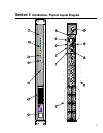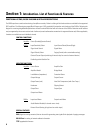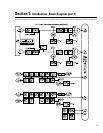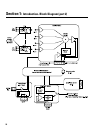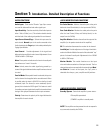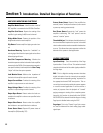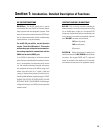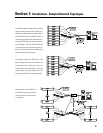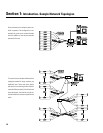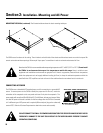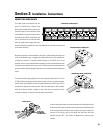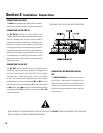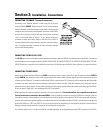
Section 1: Introduction- Network Description
14
QSC CM16a Amplifier Network Monitors are designed to operate on standard 10BASE-T Ethernet. Each CM16a operates as a
respective node on its network; each unit contains a programmable IP address in nonvolatile memory and will therefore present no
conflict with any other node on the same network. Ethernet devices such as hubs, repeaters, switches and routers will usually afford
the flexibility to configure the network as needed.
The system controller computer on the network must have an Ethernet-compatible network interface card (NIC) installed.
Additionally, if operation during power outage or interruption is required, an uninterruptable power supply (UPS) will be required for
the host computer , CM16a, and any hubs, switches or repeaters. If the CM16a is disconnected from the network for any reason, it
will continue to process audio using the last settings.
The CM16a connects to the network via its RJ-45 connector on the rear panel. This allows direct connection to a 10BASE-T network.
Use Category 3 (or better) unshielded twisted pair (UTP) Ethernet Cable. Most ready-made Ethernet patch cables available today are
rated at least Category 5 making them suitable for this application.
One side note regarding Ethernet cabling: Although Category 3 data cable is called out as the minimum requirement, it is increasingly
difficult to find. Higher grades of cable are becoming the “normal stock” with the proliferation of 100BASE-T Ethernet. Category 5
Ethernet cable is the most widely available type of data cabling as of this writing. So what does this mean? Use Category 3 if it is
available and cost effective. If the cost of Category 5 cable is not prohibitive, it may be desirable to do your cabling runs with Category
5 due to its increased data rate capabilities. The extra capability may be needed for future system expansion where 100 BASE-T
devices are used. 10BASE-T capability is all that is required for the CM16a and thus the call out for Category 3 as the minimum.
There are three LED indicators on the CM16a that relate to network operation. They are described
Section 3: Operation
.




